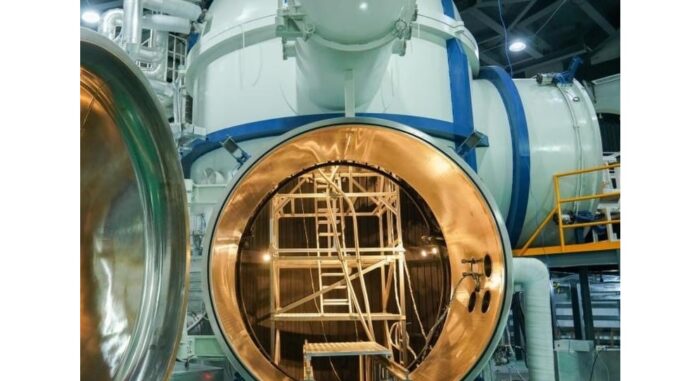
The South China Morning Post reports that the most comprehensive ground-based space environment research platform on Earth has completed testing and is officially operating in China to support the country’s growing space ambitions.
The Space Environment Simulation and Research Infrastructure (SESRI) in the northeastern city of Harbin passed its national acceptance review on Tuesday after a trial operation that began last year, according to state broadcaster CCTV.
- Specific conditions can be reproduced at the Harbin facility to test equipment and the effects on human health as an alternative to testing in orbit.
- Four laboratories host simulation chambers that can recreate environments from microgravity to solar radiation.
The multi-component facility covers an area equivalent to 50 football fields and can simulate a wide range of conditions to help scientists understand their impacts on spacecraft performance and human health.
“All systems have been running steadily since testing began in June,” said the project’s deputy commander-in-chief Li Liyi from the Harbin Institute of Technology, in the CCTV report.
The facility’s main mission was to support the safe operation of Chinese spacecraft and long-term human presence in space, Li said. “It’s also open to the global scientific community to conduct related basic research.”
More than 110 universities and institutes from over 30 countries had signed agreements to use the platform, Li told state news agency Xinhua in June.
China’s goal to become one of the world’s main aerospace powers by 2030 and a comprehensive space power by 2045 has seen it play a rapidly expanding role in outer space over the past two decades.
To meet its ambitions, it has become increasingly important for China to study harsh and complex space environments which not only put spacecraft reliability to the test but also challenge the safety and health of astronauts.
Simulator platforms like SESRI – also known as ground space stations – offer a cost-effective way to carry out experiments and test equipment without the expense of sending them into orbit.
The facility, approved by the government in 2015, is the aerospace sector’s first major research infrastructure. It was built by the Harbin Institute of Technology and the country’s main space contractor, China Aerospace Science and Technology Corporation.
SESRI, located at Harbin’s Science and Technology Innovation Park, allows researchers to set up specific parameters based on their scientific and engineering needs, and to conduct repeated experiments more conveniently and safely, according to CCTV.
The facility consists of four laboratories: a comprehensive space environment lab, one for space plasma science, another to study the magnetic environment, and an animal breeding room.
Each lab hosts a number of simulators that recreate different sets of conditions, including microgravity, solar radiation, space dust and extremely low temperatures.
The lunar dust simulation chamber – about two cubic metres (70 cubic feet) in size – can be used to study the dust’s formation and its effect on spacecraft, spacesuits and astronauts. The magnetic chamber features a near-zero magnetic field for pre-launch equipment tests.
According to Li, SESRI has already served many users and organisations at home and abroad, leading to breakthroughs in a series of key technologies and independent innovation, CCTV said.
Jin Chenggang, a physicist at the Harbin Institute of Technology, told Xinhua that he expected SESRI would attract “high-level scientific talent from around the world”.
“From the development of aerospace electronic devices to the detection of gravitational waves, from agricultural breeding to life science experiments, more research will be carried out here,” he said.
Source: South China Morning Post, 29 Feb, 2024. https://www.scmp.com/news/china/science/article/3253623/worlds-largest-space-environment-simulator-launched-northeast-china